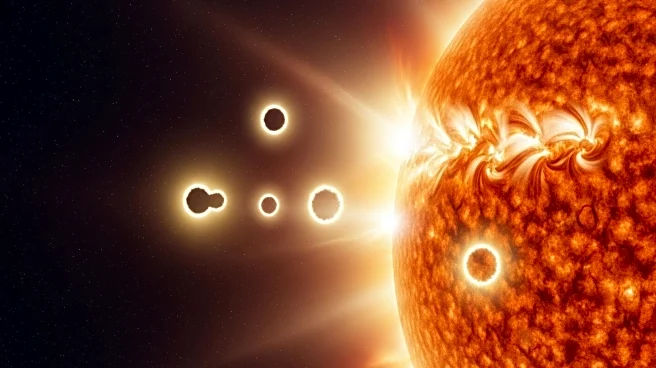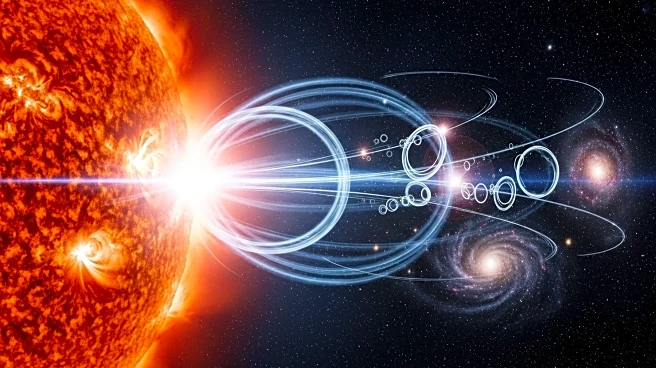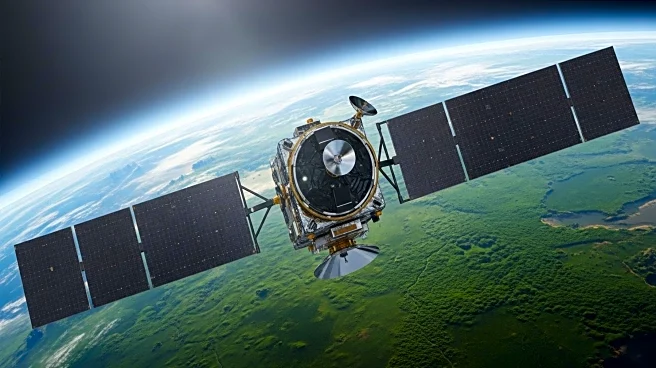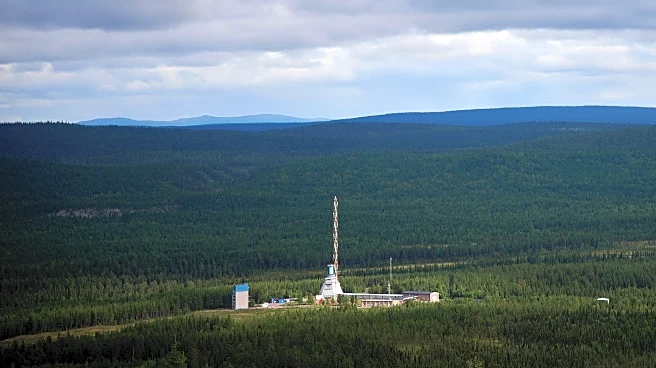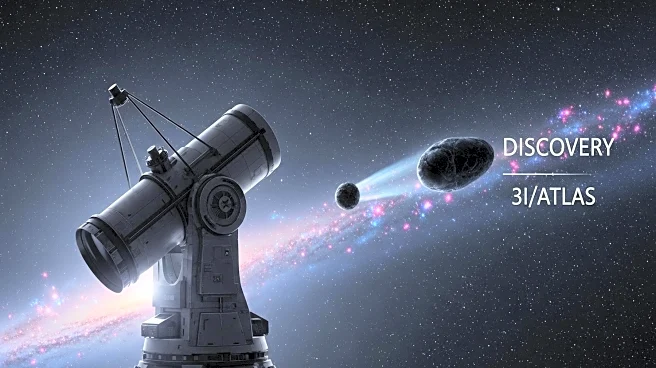What's Happening?
NASA and the European Space Agency (ESA) are actively observing sunspots on the solar disc, which are regions marked by cooler temperatures due to magnetic field flux. Sunspots follow an approximately 11-year cycle, with periods of high activity known as solar maximum and low activity as solar minimum. Historically, the Maunder Minimum, a period from 1645 to 1715, saw a significant reduction in sunspots, coinciding with the Little Ice Age in Europe. Current observations by NASA's Parker Solar Probe and ESA's Solar Orbiter aim to enhance understanding of sunspot processes and their potential impact on Earth's climate.
Why It's Important?
The study of sunspots is crucial as they can influence Earth's climate. The Maunder Minimum period demonstrated a correlation between reduced sunspot activity and colder climates. Understanding sunspot cycles helps predict potential climate changes, which can impact agriculture, energy consumption, and overall economic stability. As sunspots affect solar radiation reaching Earth, they play a role in long-term climate patterns, making their study vital for future climate predictions.
What's Next?
NASA and ESA's ongoing missions will continue to provide data on sunspot activity, potentially leading to more accurate predictions of solar cycles and their effects on Earth's climate. This research could inform climate policy and preparedness strategies, especially if another Maunder Minimum-like event occurs. Scientists will analyze data to refine models predicting sunspot cycles and their broader implications.
Beyond the Headlines
The connection between solar activity and Earth's climate remains a complex and sometimes controversial area of research. While sunspots are a natural phenomenon, their study raises questions about human influence on climate and the importance of understanding natural climate drivers. This research could shift perspectives on climate change and the role of solar activity in long-term climate trends.
